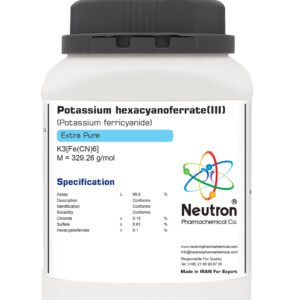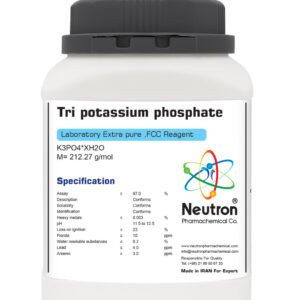زینک استئارات
| Chemical formula | Zn (CH3(CH2)16CO2)2 |
| Molar mass | 632.48 g/mol |
| CAS number | 557-05-1 |
| RTECS | ZH5200000 |
| Odour | odourless |
| Form | solid |
| Color | white |
| Flash point | 180 ° C |
| Description | Conforms | ||
| Solubility | Conforms | ||
| Identification | Conforms | ||
| LOD | ≤ | 1 | % |
| Alkalis & alkalin earths | ≤ | 1.0 | % |
| Heavy metals (lead) | ≤ | 0/001 | % |
| Free fatty acid | ≤ | 3/5 | % |
| Assay (ZnO) | 12.5 – 14.0 | % | |
| Assay (Zn) | 10.0 – 12.0 | % |
Zinc stearate is a zinc salt of stearic acid appearing as a soft, white powder widely used in various industries for its lubricant, release agent, and stabilizing properties.
🏭⚗️ Production
Zinc stearate is produced by reacting stearic acid or sodium stearate with zinc salts such as zinc sulfate or zinc oxide. The compound is then precipitated, washed, and dried to obtain the powder form.
🔬 Properties
Zinc stearate appears as a white, odorless powder that is insoluble in water but soluble in aromatic hydrocarbons and chlorinated solvents upon heating. Its chemical formula is Zn(C₁₈H₃₅COO)₂, with a molar mass of approximately 632.33 g/mol. It melts around 120–130°C and has a density near 1.095 g/cm³.
🧪 Applications
Zinc stearate is commonly used as a mold release agent in plastics and rubber processing, as a lubricant, thermal stabilizer for PVC, and as an additive in cosmetics, paints, and coatings for thickening and anti-caking.
⚠️ Safety
Zinc stearate is generally non-toxic but inhaling its dust may cause respiratory irritation. When heated to decomposition, it can release toxic fumes. Proper protective equipment such as masks and goggles is recommended during handling, and it should be stored in a cool, dry place away from acids and oxidizers.




